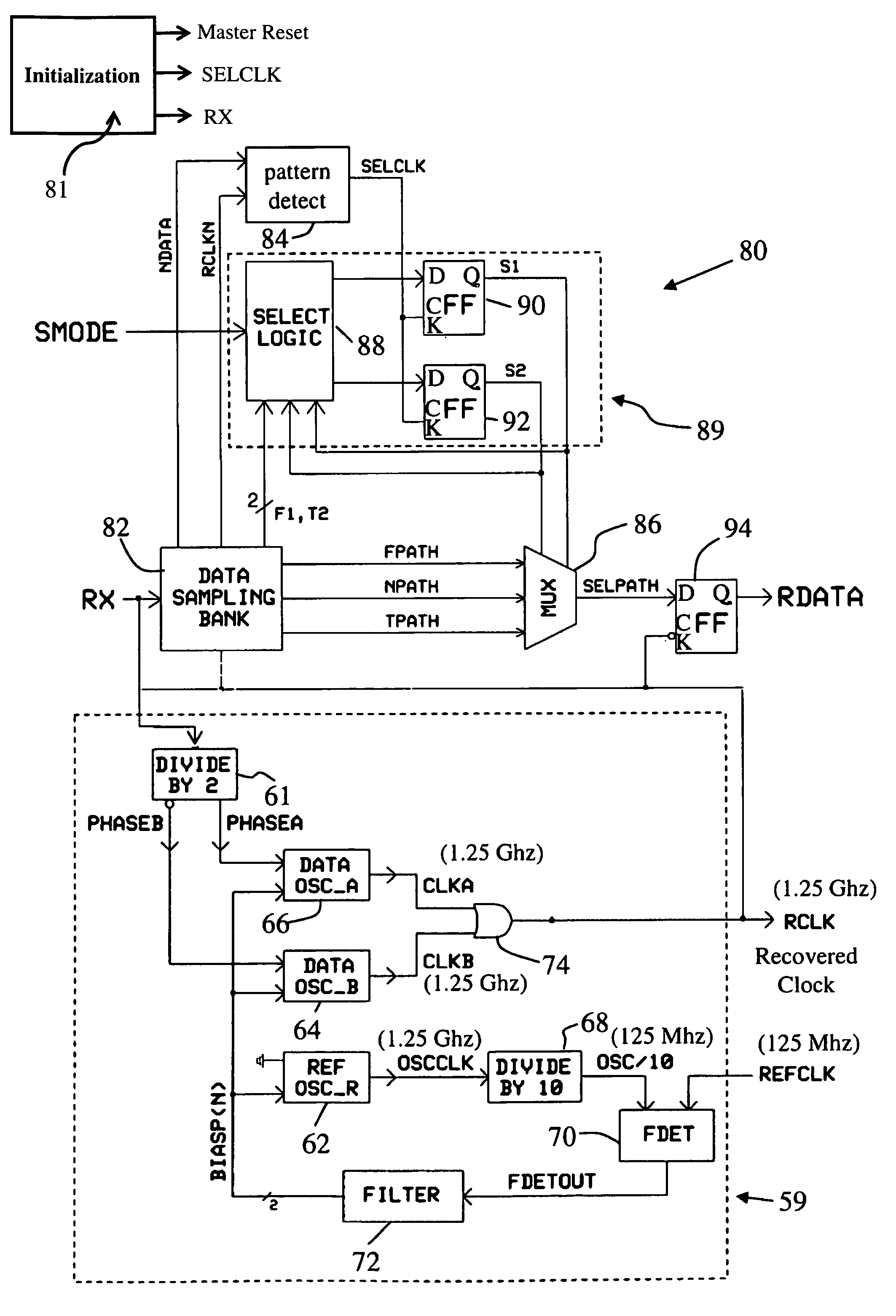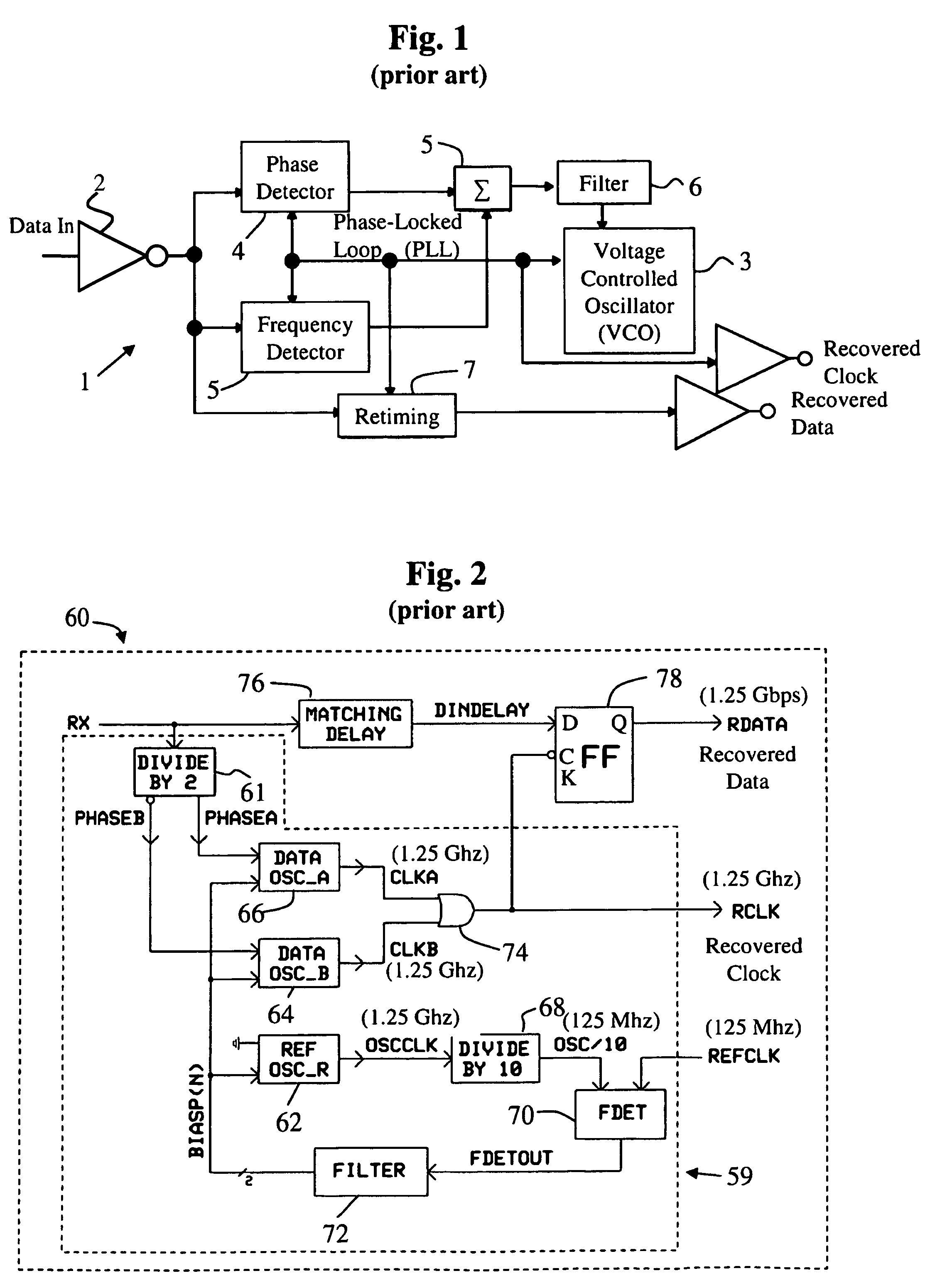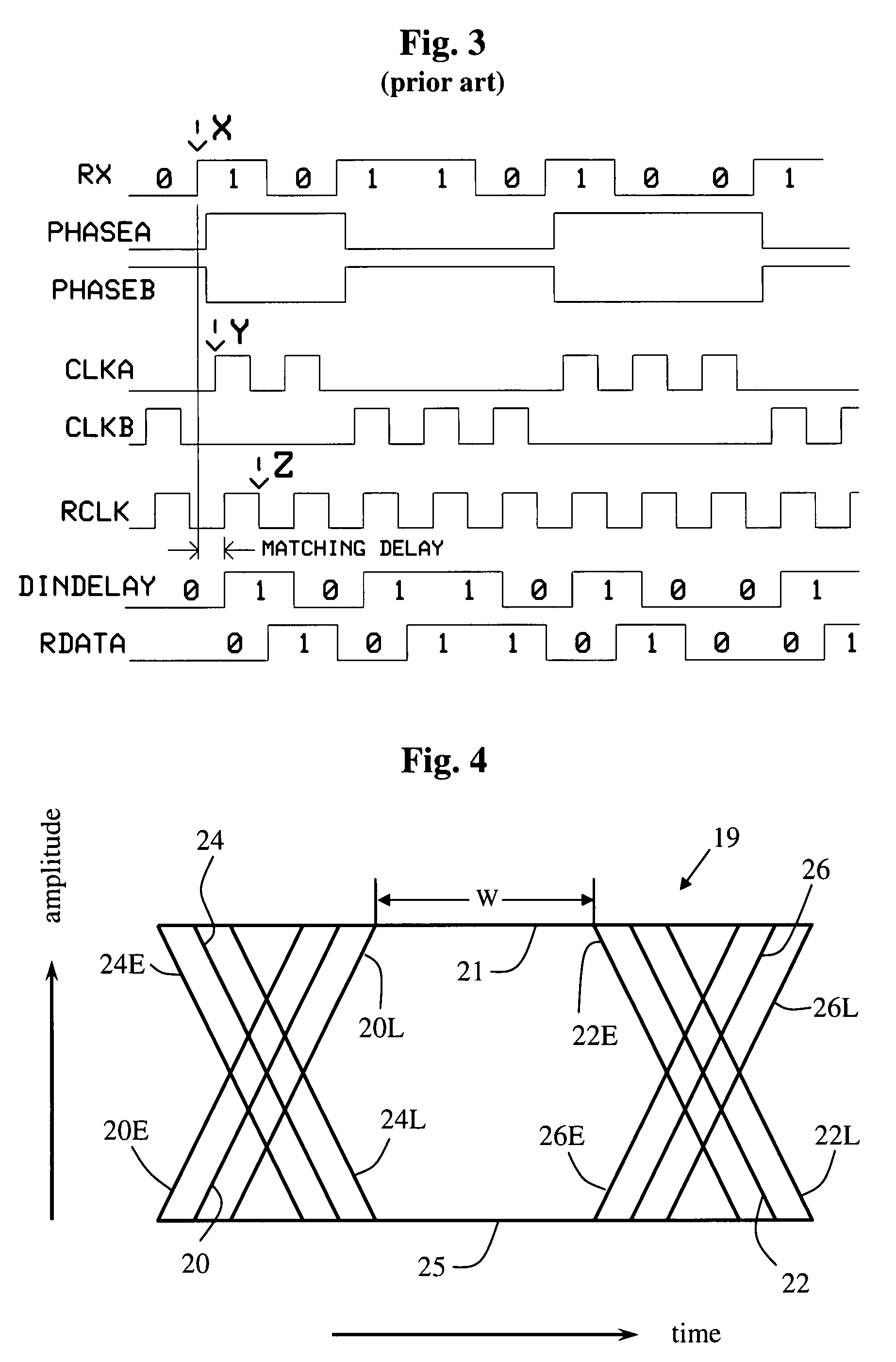Data sampling circuit and method for clock and data recovery
a data sampling and data recovery technology, applied in the direction of digital transmission, phase-modulated carrier system, synchronisation signal speed/phase control, etc., can solve the problem of difficulty in clock recovery, the desirability of burst-mode transmission, and the difficulty of nrz format typically presenting a greater difficulty, so as to reduce the effective bandwidth and reduce the effect of economic and practical implementation
- Summary
- Abstract
- Description
- Claims
- Application Information
AI Technical Summary
Benefits of technology
Problems solved by technology
Method used
Image
Examples
Embodiment Construction
[0031]In one aspect of the invention, there is provided a circuit and method for recovering clock and data signals carried in a digital communications system to a receiving location. The data may be transmitted by either electrical or optical techniques. The circuit operates on a digital input signal in the form of electrical impulses. When the circuit is used in conjunction with an optical system, the propagating light pulses are converted using any converter known in the optical fiber transmission art to provide corresponding electrical impulses. The circuit may be used for continuous data streams, but is particularly useful in connection with burst-mode communications.
[0032]Referring now to FIG. 2, there is depicted in block diagram form a known CDR circuit 60 usable for burst-mode communications. The circuit 60 acts to accepts an incoming NRZ-formatted digital signal denoted as data RX, from which is obtained a regularized, recovered data stream RDATA and a recovered clock RCLK....
PUM
 Login to View More
Login to View More Abstract
Description
Claims
Application Information
 Login to View More
Login to View More - R&D
- Intellectual Property
- Life Sciences
- Materials
- Tech Scout
- Unparalleled Data Quality
- Higher Quality Content
- 60% Fewer Hallucinations
Browse by: Latest US Patents, China's latest patents, Technical Efficacy Thesaurus, Application Domain, Technology Topic, Popular Technical Reports.
© 2025 PatSnap. All rights reserved.Legal|Privacy policy|Modern Slavery Act Transparency Statement|Sitemap|About US| Contact US: help@patsnap.com



